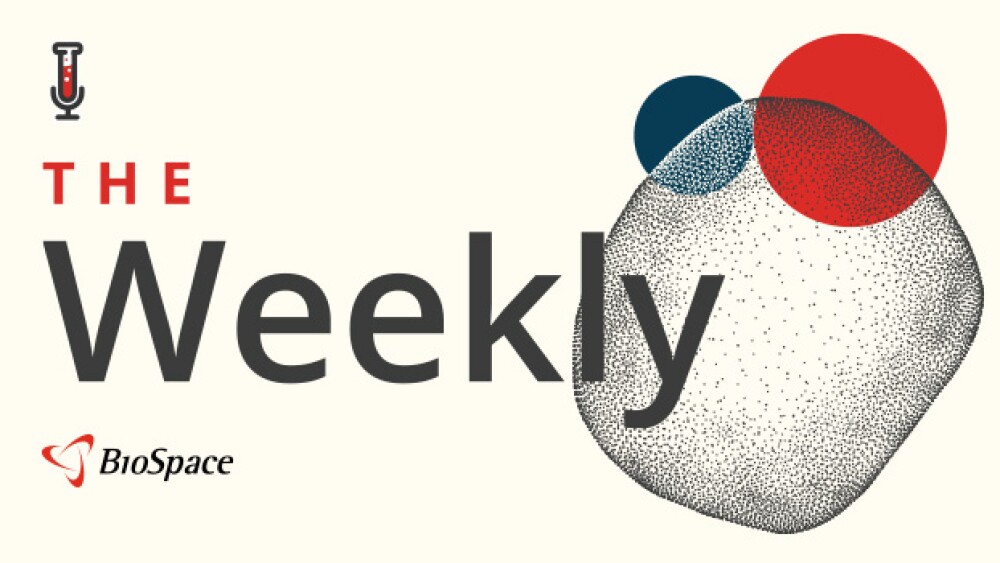Kura Oncology, Inc. (Nasdaq: KURA) today announced results from its registration-directed AIM-HN study of tipifarnib in patients with HRAS mutant head and neck squamous cell carcinoma (HNSCC) whose disease is recurrent or metastatic and has progressed after prior therapy.
– Meaningful antitumor activity observed in recurrent/metastatic HRAS mutant HNSCC, including CR –
– Data validate activity of farnesyltransferase inhibitors and support rapid advancement of KO-2806 into combinations with targeted therapies in large solid tumor indications –
– Results to be presented in late-breaking oral session at 2023 ESMO Congress on Saturday –
SAN DIEGO, Oct. 17, 2023 (GLOBE NEWSWIRE) -- Kura Oncology Inc. (Nasdaq: KURA), a clinical-stage biopharmaceutical company committed to realizing the promise of precision medicines for the treatment of cancer, today announced results from its registration-directed AIM-HN study of tipifarnib in patients with HRAS mutant head and neck squamous cell carcinoma (HNSCC) whose disease is recurrent or metastatic and has progressed after prior therapy.
These clinical results are being featured during a late-breaking oral session at the 2023 European Society for Medical Oncology (ESMO) Congress in Madrid, Spain, in a presentation titled, “A phase 2 study evaluating tipifarnib in mHRAS, recurrent or metastatic (R/M) head and neck squamous cell carcinoma (HNSCC) (AIM-HN study).” The abstract is now available on the ESMO website and the presentation will be available in the Posters and Presentations section on Kura’s website at the start of the poster session on Saturday, October 21, 2023 at 10:15AM CEST.
As of the data cutoff on June 15, 2023, 59 patients with R/M HRAS mutant HNSCC were enrolled, of whom 50 had high HRAS mutant variant allele frequency (VAF)1 and 38 were evaluable for efficacy. The following table compares response assessed between the investigators and the independent review facility (IRF), in the modified intent to treat (mITT) high VAF population2.
| Investigator Assessment (n=50) |
Independent Review Facility (n=50) |
|
| Best Overall Response, n (%) | ||
| Confirmed Complete Response (CR) | 1 (2) | 1 (2) |
| Confirmed Partial Response (PR) | 14 (28) | 9 (18) |
| Stable Disease (SD) | 17 (34) | 14 (28) |
| Progressive Disease (PD) | 6 (12) | 14 (28) |
| Not Evaluable (NE) | 12 (24) | 12 (24) |
| ORR, n (%) [95% CI] | 15 (30) [0.18, 0.45] | 10 (20) [0.10, 0.34] |
| mDoR, months [95% CI] | 5.6 [3.88, 9.23] | 6.5 [3.88, -] |
| mPFS, months [95% CI] | 3.7 [2.60, 5.55] | 2.6 [1.87, 4.40] |
*ORR, objective response rate; -, not calculable; mDoR, median duration of response; mPFS, median progression free survival; CI, confidence interval.
Both assessments by investigators and IRF observed one patient achieving a CR on treatment. Patients had a median of two prior lines of therapy (range 0-6) in the recurrent/metastatic setting and robust activity was seen in second line treatment and beyond with greater activity observed in the second line versus the third line and subsequent treatments. The ORR in second line treatment was 29% [0.13, 0.51] in the IRF assessment. The ORR for three FDA-approved therapies for the treatment of HNSCC in the second line range from 13-16%.
“The results from the AIM-HN study are encouraging as they demonstrate meaningful clinical benefit of tipifarnib in a subset of HNSCC for which there are currently no other targeted therapies in development, and a significant unmet need exists for the population,” said Alan Ho, M.D., Ph.D., of Memorial Sloan Kettering Cancer Center and principal investigator of the study. “We are grateful to the patients and their families for their trial participation and for the scientific community who have contributed to this pivotal research in an effort to impact patients’ lives.”
Patients in the AIM-HN trial received tipifarnib at a dose of 600 mg orally twice daily on days 1-7 and 15-21 of 28-day cycles. Tipifarnib was generally well-tolerated with a manageable safety profile. The most common grade 3 or 4 treatment-related adverse events (TRAEs) seen in at least 10% of patients were cytopenias and TRAEs led to discontinuation of treatment in 7% of patients.
“We continue to be encouraged by the compelling safety profile and activity of tipifarnib as a monotherapy in this difficult-to-treat population of advanced head and neck cancer, supported by our Breakthrough Therapy Designation from the FDA,” said Troy Wilson, Ph.D., J.D., President and Chief Executive Officer of Kura Oncology. “Building on the results of the previous RUN-HN study, these data confirm that, in the proper biological context in which a target protein is obligately farnesylated, FTIs have potential to drive meaningful clinical benefit for patients. With these data in hand, we continue to evaluate in the ongoing KURRENT-HN study whether the combination of tipifarnib and alpelisib has potential to extend the clinical benefit observed in this study to a broader set of HNSCC patients.”
“In addition,” Dr. Wilson continued, “we believe these positive results from AIM-HN validate the therapeutic value of farnesyl transferase inhibition as we begin to execute on our clinical development plan for our next-generation FTI, KO-2806, which we will use to target other farnesylated targets such as RHEB and which we believe could become the preferred combination partner for a number of targeted therapies in multiple large solid tumor indications, including KRAS inhibitors in certain solid tumors and tyrosine kinase inhibitors in clear cell renal cell carcinoma.”
About AIM-HN
AIM-HN is a multicenter, open-label, pivotal study evaluating the efficacy of tipifarnib in HRAS mutant HNSCC. Eligibility criteria include patients with recurrent or metastatic HRAS mutant HNSCC at any VAF level. The primary and key secondary endpoints of this trial include ORR and DoR in the high VAF population. The trial was designed to enroll at least 59 patients with HRAS mutant HNSCC who received prior platinum-based therapy and was closed to enrollment in November 2022. Further details regarding the trial are available at clinicaltrials.gov (NCT03719690).
About HNSCC
Head and neck squamous cell carcinoma (HNSCC) is the seventh most common cancer worldwide, accounting for more than 500,000 new cases each year. Despite advances in immunotherapy, the prognosis for advanced HNSCC patients remains poor, with an estimated median overall survival of 13-15 months in patients when stratified by PD-L1 expression. Although the anti-epidermal growth factor receptor (EGFR) antibody, cetuximab, was approved more than a decade ago, development of biomarker-directed therapies in HNSCC has been stymied by the limited number of druggable targets in the genomic landscape and the challenge of managing drug refractory, recurrent/metastatic HNSCC.
About Kura Oncology
Kura Oncology is a clinical-stage biopharmaceutical company committed to realizing the promise of precision medicines for the treatment of cancer. The Company’s pipeline consists of small molecule drug candidates that target cancer signaling pathways. Ziftomenib is a once-daily, oral drug candidate targeting the menin-KMT2A protein-protein interaction for the treatment of genetically defined acute myeloid leukemia (AML) patients with high unmet need. Kura is currently enrolling patients in a Phase 2 registration-directed trial of ziftomenib in NPM1-mutant relapsed or refractory AML (KOMET-001). The Company is also conducting a series of studies to evaluate ziftomenib in combination with current standards of care, beginning with venetoclax/azacitidine and standard induction cytarabine/daunorubicin chemotherapy in NPM1-mutant and KMT2A-rearranged newly diagnosed and relapsed/refractory AML (KOMET-007). Tipifarnib, a potent and selective FTI, is currently in a Phase 1/2 trial in combination with alpelisib for patients with PIK3CA-dependent head and neck squamous cell carcinoma (KURRENT-HN). Kura is also preparing to evaluate KO-2806, a next-generation FTI, in a Phase 1 dose-escalation trial as a monotherapy and in combination with other targeted therapies, beginning with ccRCC and KRASG12C-mutant NSCLC (FIT-001). For additional information, please visit Kura’s website at www.kuraoncology.com and follow us on Twitter and LinkedIn.
Disclosures
Memorial Sloan Kettering (MSK) has institutional financial interests related to Kura Oncology. Dr. Ho has financial interests related to Kura Oncology.
Forward-Looking Statements
This news release contains certain forward-looking statements that involve risks and uncertainties that could cause actual results to be materially different from historical results or from any future results expressed or implied by such forward-looking statements. Such forward-looking statements include statements regarding, among other things, the efficacy, safety and therapeutic potential of tipifarnib, potential benefits of combining tipifarnib with appropriate standards of care, and progress and expected timing of the tipifarnib program and clinical trials. Factors that may cause actual results to differ materially include the risk that compounds that appeared promising in early research or clinical trials do not demonstrate safety and/or efficacy in later preclinical studies or clinical trials, the risk that Kura may not obtain approval to market its product candidates, uncertainties associated with performing clinical trials, regulatory filings, applications and other interactions with regulatory bodies, risks associated with reliance on third parties to successfully conduct clinical trials, the risks associated with reliance on outside financing to meet capital requirements, and other risks associated with the process of discovering, developing and commercializing drugs that are safe and effective for use as human therapeutics, and in the endeavor of building a business around such drugs. You are urged to consider statements that include the words “may,” “will,” “would,” “could,” “should,” “believes,” “estimates,” “projects,” “promise,” “potential,” “expects,” “plans,” “anticipates,” “intends,” “continues,” “designed,” “goal,” or the negative of those words or other comparable words to be uncertain and forward-looking. For a further list and description of the risks and uncertainties the Company faces, please refer to the Company's periodic and other filings with the Securities and Exchange Commission (SEC), including the Company’s Form 10-Q for the quarter ended June 30, 2023 filed with the SEC on August 9, 2023, which are available at www.sec.gov. Such forward-looking statements are current only as of the date they are made, and Kura assumes no obligation to update any forward-looking statements, whether as a result of new information, future events or otherwise.
Contacts
Investors:
Pete De Spain
Executive Vice President, Investor Relations &
Corporate Communications
(858) 500-8833
pete@kuraoncology.com
Media:
Alexandra Weingarten
Senior Manager, Corporate Communications
(858) 500-8822
alexandra@kuraoncology.com
1 HRAS variant allele frequency ≥ 20% and treated with at least one dose of tipifarnib
2 One low VAF patient (< 20% VAF) was a responder to treatment





